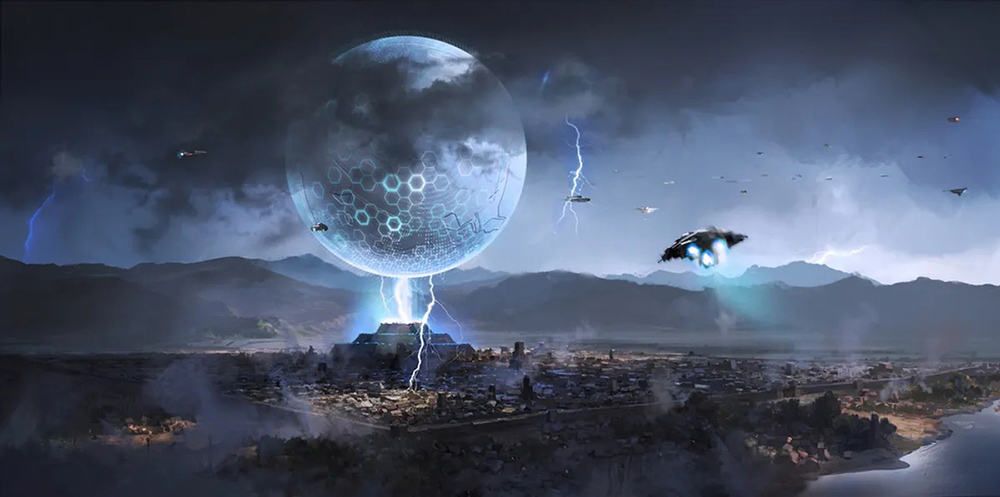The term Silurian Hypothesis was inspired by the fictional species the Silurians from the British television series Doctor Who. It is a thought experiment which assesses modern science's ability to detect evidence of a prior advanced civilization be it evolved or primitive - real or mythological.
It is not that different from Ancient Alien Theory that Earth has been inhabited by advanced civilizations in the past. They have come and gone in spaceships, through portals and wormholes, and things we know nothing about - leaving behind enigmatic artifacts as proof of their existence here. Some believe they will return as the human experiment ends with us.
I believe ancient visitors (mostly artificial intelligence) have been here - but not that they will return. At the end of the day, it's all a Simulation set in linear time to experience emotions.

The Silurian Hypothesis: Might Earth Have Hosted A Sophisticated Civilization Millions Of Years Before Our Existence? IFL Science - August 3, 2023
Published in the Journal of Astrobiology, the paper does not argue that there was a technologically-advanced species long before humanity, but proposed the interesting hypothetical question of whether it would be possible to find "geological fingerprints" of a bygone civilization that expired millions of years ago.
Astrophysicists Adam Frank and Gavin Schmidt proposed the "Silurian Hypothesis" in a 2018 paper, exploring the possibility of detecting an advanced civilization before humans in the geological record. They argued that there has been sufficient fossil carbon to fuel an industrial civilization since the Carboniferous Period (~350 million years ago).
However, finding direct evidence, such as technological artifacts, is unlikely due to the rarity of fossilization and Earth's exposed surface. Instead, researchers might find indirect evidence, such as climate changes, anomalies in sediment, or traces of nuclear waste. The hypothesis also speculates that artifacts from past civilizations could be found on the Moon and Mars, where erosion and tectonic activity are less likely to erase evidence. The concept of pre-human civilizations has been explored in popular culture, including novels, television shows, and short stories.
The idea was presented in a 2018 paper by Adam Frank, an astrophysicist at the University of Rochester, and Gavin Schmidt, director of the Goddard Institute for Space Studies. Frank and Schmidt imagined an advanced civilization before humans and pondered whether it would "be possible to detect an industrial civilization in the geological record".
They argue as early as the Carboniferous period (~350 million years ago) "there has been sufficient fossil carbon to fuel an industrial civilization comparable with our own". However, they also wrote: "While we strongly doubt that any previous industrial civilization existed before our own, asking the question in a formal way that articulates explicitly what evidence for such a civilization might look like raises its own useful questions related both to astrobiology and to Anthropocene studies."
According to Frank and Schmidt, since fossilization is relatively rare and little of Earth's exposed surface is from before the Quaternary time period (~2.5 million years ago), there is low probability of finding direct evidence of such a civilization, such as technological artifacts.
After a great time span, the researchers concluded, contemporary humans would be more likely to find indirect evidence such as rapid changes in temperature or climate (as occurred during the Paleocene-Eocene Thermal Maximum ~55 million years ago); evidence of tapping geothermal power sources; or anomalies in sediment such as their chemical composition (e.g., evidence of artificial fertilizers) or isotope ratios (e.g., there is no naturally occurring plutonium-244 outside a supernova, so evidence of this isotope could indicate a technologically advanced civilization).
Objects that could indicate possible evidence of past civilizations include plastics and nuclear wastes residues buried deep underground or on the ocean floor.
Frank and Schmidt speculate such a civilization could have gone to space and left artifacts on other celestial bodies, such as the Moon and Mars. Evidence for artifacts on these two worlds would be easier to find than on Earth, where erosion and tectonic activity
would erase much of it. Frank first approached Schmidt to discuss how to detect alien civilizations via their potential impact upon climate through the study of ice cores and tree rings. They both realized that the hypothesis could be expanded and applied to Earth and humanity due to the fact that humans have been in their current form for the past 300,000 years and have had sophisticated technology for only the last few centuries. Continue reading